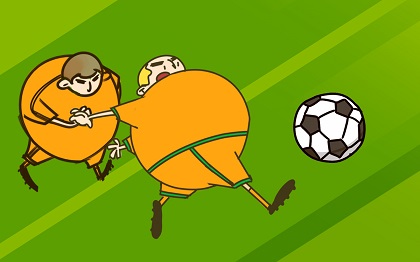驰加创立20周年迎来焕新升级
7月26日,米其林集团旗下汽车服务中心——驰加20周年庆典暨2023媒体沟
新概念英语第二册课文注解 (109)已发布,欢迎大家查看。新概念第二册内容主要针对的是基础比较薄弱的同学,为了方便同学们可以更好地巩固英语基础,小编还整理了新概念英语第二册课文、新概念英语第二册音频、新概念英语第二册电子书相关内容,便于同学们一起学习!
 (资料图片仅供参考)
(资料图片仅供参考)
课文详注 Further notes on the text
1.In 1929, three years after his flight over theNorth Pole, the American explorer, R. E. Byrd,successfully flew over the South Pole for thefirst time. 美国探险家 R·E·伯德在飞越北极3年之后,于1929年第1次飞越了南极。
(1)这句话包含两个同位语。three years after…为 1929的同位语,作插入性的补充说明;R.E.Byrd 作 theAmerican explorer 的同位语。
(2)for the first time 表示“第一次”,time在这里表示“次”、“回”,还可以说 this time, last time, next time, another time, each time, for the lasttime等:
I remind you for the last time that if you don"t hurry, you"ll miss the train.
我最后一次提醒你,如果不快点,你会误了火车的。
Give him these photos next time you see him.
下次你见到他时把这些相片给他。
2.Though, at first, Byrd and his men were able to take a great many photographs ofthe mountains that lay below, they soon ran into serious trouble. 虽然开始时伯德和他的助手们拍下了飞机下面连绵群山的大量照片,但他们很快就陷入了困境。
(1)连词though引导的是让步状语从句,其含义为“虽然……”、“尽管……”。这个从句中的时间状语at first被单独用逗号隔开了,它如果按正常的词序应放在从句的末尾,但有可能会引起误解。
(2)at first与主句中的 soon形成时间上的照应,表示先后次序。
(3)take a photograph of 表示“拍……的照片”:
He took a photograph of his house before he left home.
他离家前给他家的房子拍了一张照片。
(4)that lay below为 the mountains的定语从句,that为从句的主语。
(5)run into trouble的含义与 get into trouble相似,表示“陷入困境”:
Each time he ran into trouble, he asked his parents for help.
每当他陷入困境时,他都向他父母求助。
3.At one point, it seemed certain that their plane would crash. 在有个地方,飞机似乎肯定要坠毁了。
(1)at one point在此处可以解释为“在有个地方”,但它通常的含义为“在某一时刻”,point指时间上的某一点:
At one point, he made up his mind to become a painter.
他曾一度下决心要当个画家。
(2)it为“先行主语”,真正的主语为that引导的从句。it作先行主语时经常与seem,appear,look等连用:
It now looks certain that the meeting is going to be put off.
现在似乎可以肯定会议将被推迟。
4.rise to,飞机“上升至……”。
5.… it cleared the mountains by 400 feet. ……它在离山头400英尺的高度飞越了过去。
clear在这里表示“(不接触地)越过”:
He cleared 2. 10 metres.
他跳过了2.10米。
by表示“以……之差”:
I missed the train by ten minutes.
我晚了10分钟,没赶上火车。
He is younger than me by two years.
他比我小两岁。
6.…for there were no more mountains in sight. ……因为前面再没有山了。
for表示“因为”。 in sight表示“在看得见的范围内”、“在可看见之处”:
No man was in sight.
一个人也看不见。
7.white plains, 白色原野。
因为南极到处覆盖着雪,因此是白色的。
语法 Grammar in use
can, could与 be able to
在第19课的语法中,我们学习了情态助动词 can/could用于表示请求别人允许或答复时的情况:
Can/Could I borrow your unbrella (please)?
(请问)我可以借用一下你的雨伞吗?(could 比can更客气、委婉)
can有时可以用于表示可能性:
在表示天生的或学到的能力时,can/could可用于现在时和过去时:
Billy is only 9 months old and he can already stand up. 比利只有9个月,而他已经能站起来了。
在现在时和一般过去时中,can/could与 be able to通常可以互换,be able to往往用于表示学到的技能:
I tried again and found I could swim/was able to swim. 我再次努力,就发现自己会游泳了。
在谈到说话时正在发生的事时,一般不用 be able to:Look! I can stand on my head.
看!我能倒立。
以上就是为大家整理的“新概念英语第二册课文注解 (109)”,更多新概念英语的干货内容,欢迎访问新东方新概念英语课堂,查看新概念英语第二册课后答案、新概念英语第二册单词和新概念英语第二册视频可供参考。祝同学们学习新概念英语2顺利!
新东方在线英语水平测试
关键词:

7月26日,米其林集团旗下汽车服务中心——驰加20周年庆典暨2023媒体沟

距离成都大运会开幕还有2天,入驻大运村的四川省骨科医院运动医学科主

由于临近天河区珠江新城、天河公园、体育中心以及海珠区琶洲等重点商务

小评来为大家解答以上问题。橘色怎么调色,橘色怎么调很多人还不知道,

人民网北京7月25日电(记者孙竞)7月24日,北京大学发布《校友预约入校

7月20日中午,来自中国香港代表团的参赛制服被稳稳送入杭州亚运物流中

7月21日,江西省发布了《关于做好2023年度普通高等学校本科专业设

潜水员戴夫是一款许多人都在玩的游戏,潜水员戴夫员工是否要满级可能有

新华社维尔纽斯7月11日消息,由于北约成员国在乌克兰加入北约问题上分

7月11日,参观者(右)在航海科技博览会上体验船舶遥控驾驶系统。作

以闪亮之名上线了全新拍照礼包醉舞仙阁,大家知道这个礼包中有什么具体

1、鲁班姓姬。2、鲁班是春秋时期鲁国人,姬姓,公输氏,名班,人称公输

来自台湾台北的罗芷盈小时候看湖南卫视的节目,常听主持人提起“马栏山

甘肃省领取社保待遇资格认证周期由180天调整为365天

7月6日,福建厦门。张先生晚上外出时,看到一外卖小哥背着婴儿送餐很受

尽管今年5月以来A股市场迎来了一波调整,但基金公司却在逆势入场,用“

君正集团融资融券信息显示,2023年7月11日融资净偿还万元;融资余额亿

小米预计在今年11月初发布新一代旗舰手机的中杯和大杯,也就是小米14和

10不锈钢和304有什么区别,210这个问题很多朋友还不知道,来为大家解答

1、尤勇智(原名尤勇),1963年12月13日生于陕西省西安市,中国内地影

01:26今年7月20日是传奇武打明星李小龙逝世50周年纪念日,香港文化博物

【高温、洪水轮番登场2023成地球最热一年的概率又增加了】寰球同此凉热

在炎热的盛夏里面,除了吃雪糕和冰西瓜能够带给我们盛夏的乐趣之外,还

韩K联第22轮,补时阶段卡朱和塞西尼亚各错失一次绝杀机会,大邱FC主场0

近日,新疆阿克苏边境管理支队博孜墩边境派出所民警艾尼瓦尔接到邮局打